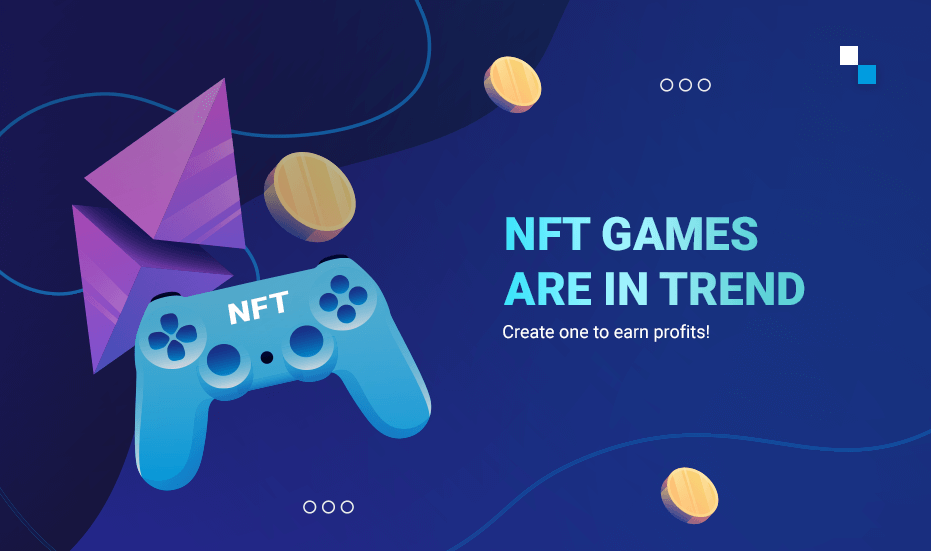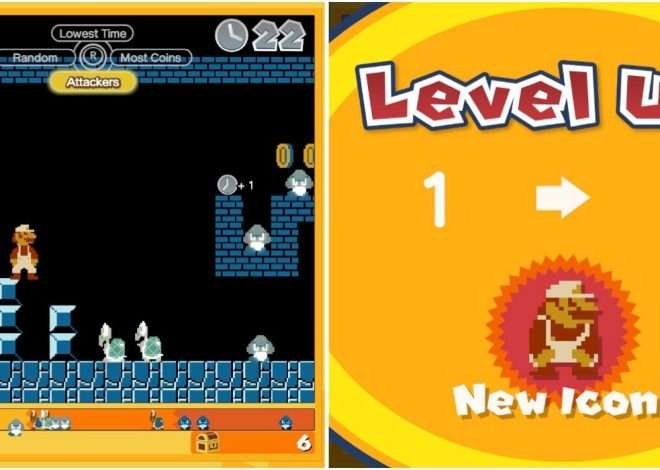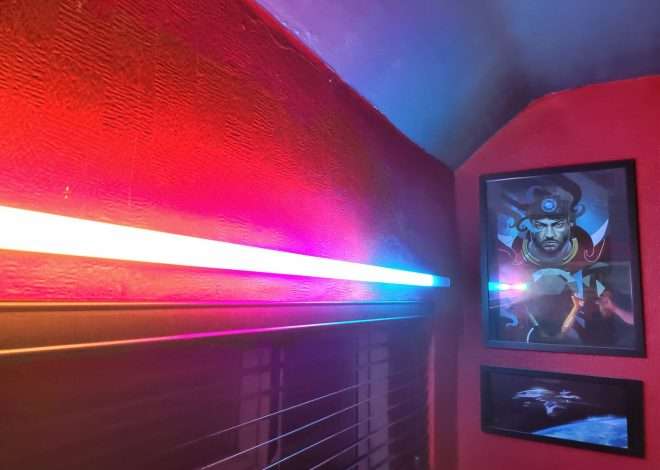
NFT Game Development Checklist for 2023
The allure of integrating Non-Fungible Tokens (NFTs) into the gaming world has captivated developers and players alike․ Imagine a world where in-game assets possess real-world value and are truly owned by the players․ This paradigm shift, driven by blockchain technology, presents both immense opportunities and complex challenges․ Successfully navigating this landscape requires a meticulously planned and executed strategy․ This comprehensive guide serves as your NFT game development checklist for 2023, outlining the essential steps to create a compelling and sustainable gaming experience․
I․ Conceptualization and Planning
A․ Defining Your Game’s Genre and Target Audience
The foundation of any successful game, NFT-powered or otherwise, lies in a clear understanding of its genre and target audience․ What type of game are you building? Is it a massively multiplayer online role-playing game (MMORPG), a collectible card game (CCG), a strategy game, or something entirely new? Identifying the genre helps narrow your focus and allows you to research existing games in the same category for inspiration and to identify potential pitfalls․ Equally important is defining your target audience․ Who are you trying to reach? Are you targeting hardcore gamers, casual players, or NFT enthusiasts? Understanding their preferences, gaming habits, and risk tolerance will significantly impact your game’s design, marketing strategy, and overall success․
- Genre Selection: Carefully consider the genre’s popularity, market saturation, and your team’s expertise․
- Target Audience Analysis: Conduct thorough research to understand your target audience’s demographics, interests, and expectations․
- Market Research: Analyze existing games in the same genre to identify trends, opportunities, and potential competitors․
B․ Developing a Compelling Game Design Document (GDD)
The Game Design Document (GDD) is the blueprint for your game․ It’s a comprehensive document that outlines every aspect of the game, from its core mechanics to its visual style․ A well-written GDD serves as a single source of truth for the entire development team, ensuring everyone is on the same page and working towards the same goals․ The GDD should include detailed descriptions of the gameplay mechanics, the game’s story and lore, the characters and their roles, the levels and environments, the user interface (UI) and user experience (UX), and the monetization strategy․
Furthermore, the GDD should explicitly define how NFTs will be integrated into the game․ What types of assets will be tokenized? How will players acquire and use these NFTs? What benefits will NFTs provide to players? The answers to these questions will shape the core gameplay loop and determine the overall value proposition of your NFT integration․
C․ Legal Considerations and Compliance
NFTs operate in a relatively new and rapidly evolving legal landscape․ It’s crucial to consult with legal professionals who specialize in blockchain technology and cryptocurrency regulations to ensure your game complies with all applicable laws and regulations․ This includes issues related to securities laws, consumer protection laws, and data privacy laws․
Specifically, you need to consider whether the NFTs you are creating could be classified as securities․ The SEC has taken the position that some digital assets can be considered securities, and offering unregistered securities can result in significant legal penalties․ You also need to ensure that your game’s terms of service are clear and transparent and that you are protecting user data in accordance with applicable privacy laws;
II․ Blockchain Technology Selection and Implementation
A․ Choosing the Right Blockchain Platform
Selecting the right blockchain platform is a critical decision that will significantly impact your game’s performance, scalability, and security․ Several blockchain platforms are suitable for NFT game development, each with its own strengths and weaknesses․ Ethereum is the most widely used platform for NFTs, but it can suffer from high transaction fees and slow transaction times․ Other popular options include Polygon (a Layer-2 scaling solution for Ethereum), Solana (known for its high throughput and low fees), and Binance Smart Chain (BSC) (another popular alternative to Ethereum)․
When choosing a blockchain platform, consider factors such as transaction fees, transaction speed, scalability, security, developer tools, and community support․ You should also consider the environmental impact of the blockchain․ Some blockchains, like Bitcoin, use a Proof-of-Work consensus mechanism, which is energy-intensive․ Other blockchains, like Ethereum (after its transition to Proof-of-Stake) and Solana, use more energy-efficient consensus mechanisms․
B․ Smart Contract Development and Auditing
Smart contracts are self-executing contracts written in code that run on the blockchain․ They are the backbone of your NFT game, governing the creation, ownership, and transfer of NFTs․ Developing secure and efficient smart contracts is essential to prevent vulnerabilities that could be exploited by hackers․ It is highly recommended to hire experienced smart contract developers and to conduct thorough audits of your smart contracts by reputable security firms․
Smart contract audits involve a comprehensive review of the code to identify potential bugs, security flaws, and inefficiencies․ Auditors will look for common vulnerabilities, such as reentrancy attacks, integer overflows, and denial-of-service attacks․ Addressing these vulnerabilities before deploying your smart contracts to the mainnet is crucial to protecting your players and your game’s reputation․
C․ NFT Standards and Metadata
NFTs are typically created using standard protocols, such as ERC-721 and ERC-1155 on Ethereum․ ERC-721 is the most common standard for unique NFTs, while ERC-1155 allows for the creation of both fungible and non-fungible tokens․ Choosing the appropriate standard for your game’s NFTs is important for interoperability and compatibility with existing NFT marketplaces and wallets․
NFT metadata provides information about the NFT, such as its name, description, image, and other attributes․ This metadata is typically stored on a decentralized storage solution, such as IPFS (InterPlanetary File System)․ Ensuring that your NFT metadata is accurate and consistent is crucial for providing a good user experience and for maintaining the integrity of your game’s economy․
III․ Game Development and Integration
A․ Core Game Mechanics and Gameplay Loop
While NFTs add a new layer of complexity and potential value to games, the core game mechanics and gameplay loop remain paramount․ Your game needs to be fun and engaging, regardless of the NFTs; Focus on creating a compelling gameplay experience that keeps players coming back for more․ The integration of NFTs should enhance the gameplay, not detract from it․
Consider how NFTs can be used to reward players for their achievements, to unlock new content, or to provide unique advantages․ Think about how NFTs can be integrated into the game’s economy to create a sustainable and rewarding system for players․ The goal is to create a symbiotic relationship between the gameplay and the NFT integration, where each enhances the other․
B․ Art, Design, and User Interface (UI)
The visual appeal of your game is crucial for attracting and retaining players․ Invest in high-quality art and design that is consistent with your game’s genre and target audience․ Pay attention to the user interface (UI) and user experience (UX)․ The UI should be intuitive and easy to navigate, and the UX should be smooth and enjoyable․
When designing the UI, consider how players will interact with NFTs․ Make it easy for players to view their NFT inventory, to buy and sell NFTs, and to use NFTs within the game․ Provide clear and concise information about the value and utility of each NFT․ A well-designed UI can significantly improve the overall player experience and increase engagement with your game․
C․ Backend Infrastructure and Scalability
Your game’s backend infrastructure needs to be robust and scalable to handle a large number of players and transactions․ This includes the servers that host your game, the database that stores player data, and the APIs that connect your game to the blockchain․ Consider using cloud-based infrastructure to ensure scalability and reliability․
Optimizing your game’s performance is crucial for providing a smooth and responsive gaming experience․ This includes optimizing the code, the graphics, and the network communication․ Conduct thorough testing to identify and fix performance bottlenecks before launching your game․
IV․ NFT Marketplace and Trading
A․ Building Your Own Marketplace vs․ Integrating with Existing Platforms
You have two main options for allowing players to trade NFTs: building your own marketplace or integrating with existing NFT marketplaces․ Building your own marketplace gives you more control over the user experience and allows you to customize the platform to your specific needs․ However, it also requires significant investment in development and marketing․
Integrating with existing NFT marketplaces, such as OpenSea or Rarible, provides access to a large user base and eliminates the need to build your own platform․ However, you will have less control over the user experience and will be subject to the marketplace’s fees and policies․ The best option depends on your budget, your resources, and your long-term goals․
B․ Implementing Secure and Transparent Trading Mechanisms
Ensuring secure and transparent trading mechanisms is crucial for building trust with your players․ Use secure smart contracts to facilitate NFT trades and implement robust fraud prevention measures․ Provide clear and transparent information about the fees and commissions associated with trading NFTs․
Consider implementing escrow services to protect buyers and sellers from fraud․ Escrow services hold the NFTs and the payment until both parties have fulfilled their obligations․ This can significantly reduce the risk of scams and improve the overall user experience․
C․ Gas Fee Optimization Strategies
Gas fees, which are the transaction fees charged by the blockchain network, can be a significant barrier to entry for players․ Optimizing gas fees is crucial for making your game accessible to a wider audience․ Consider using Layer-2 scaling solutions, such as Polygon, to reduce gas fees․
You can also implement batch transactions to group multiple transactions into a single transaction, thereby reducing the overall gas cost․ Another strategy is to use gas tokens, which are tokens that can be used to offset gas fees․ Experiment with different gas fee optimization strategies to find the best solution for your game․
V․ Marketing and Community Building
A․ Developing a Comprehensive Marketing Plan
A well-defined marketing plan is essential for attracting players to your game․ Your marketing plan should include a mix of online and offline marketing activities, such as social media marketing, influencer marketing, content marketing, and public relations․ Identify your target audience and tailor your marketing message to their interests and needs․
Consider launching a pre-launch marketing campaign to generate buzz and excitement for your game․ Offer early access to your game to select players and reward them for their feedback․ Use social media to engage with your community and to keep them updated on the latest developments․
B․ Building a Strong and Engaged Community
A strong and engaged community is crucial for the long-term success of your game․ Create a welcoming and inclusive environment where players can connect with each other and with the development team․ Actively engage with your community on social media, forums, and Discord channels․
- Regular Communication: Keep your community informed about the game’s development progress through regular updates, blog posts, and livestreams․
- Feedback Collection: Encourage players to provide feedback and suggestions for improving the game․
- Community Events: Organize regular community events, such as tournaments, contests, and Q&A sessions․
C․ Leveraging Influencer Marketing and Partnerships
Influencer marketing can be a powerful tool for reaching a wider audience․ Identify influencers who are relevant to your game’s genre and target audience and partner with them to promote your game․ Offer influencers early access to your game and provide them with exclusive content to share with their followers․
Consider partnering with other companies in the blockchain and gaming space to cross-promote your game․ This can help you reach new audiences and build credibility within the industry․ Look for partnerships that are mutually beneficial and that align with your game’s values․
VI․ Post-Launch Support and Updates
A․ Monitoring Game Performance and Player Feedback
After launching your game, it’s crucial to monitor its performance and to gather player feedback․ Use analytics tools to track key metrics, such as player retention, engagement, and monetization․ Pay attention to player reviews and comments on social media and forums․ Use this data to identify areas for improvement and to prioritize future development efforts․
B․ Implementing Regular Updates and Content Additions
Keeping your game fresh and engaging requires regular updates and content additions․ Add new features, characters, levels, and items to keep players coming back for more․ Address bugs and performance issues promptly to ensure a smooth and enjoyable gaming experience․
C․ Balancing the Game Economy and NFT Value
Maintaining a balanced game economy and NFT value is crucial for the long-term sustainability of your game․ Monitor the supply and demand of NFTs and adjust the game’s mechanics accordingly․ Implement mechanisms to prevent inflation and to ensure that NFTs retain their value over time․
Consider implementing burning mechanisms, which involve permanently removing NFTs from circulation․ This can help to reduce the supply of NFTs and to increase their value․ You can also implement staking mechanisms, which allow players to earn rewards by locking up their NFTs․ This can help to reduce the volatility of NFT prices and to incentivize long-term holding․
Developing an NFT game is a complex undertaking, demanding meticulous planning and execution․ By following this checklist, you’ll increase your chances of creating a successful and engaging game that resonates with players and thrives in the evolving blockchain landscape․ Remember to prioritize security, transparency, and a fun gameplay experience above all else․ The integration of NFTs should enhance the game, not overshadow it․ Focus on building a strong community and providing ongoing support to ensure the long-term success of your NFT game․



